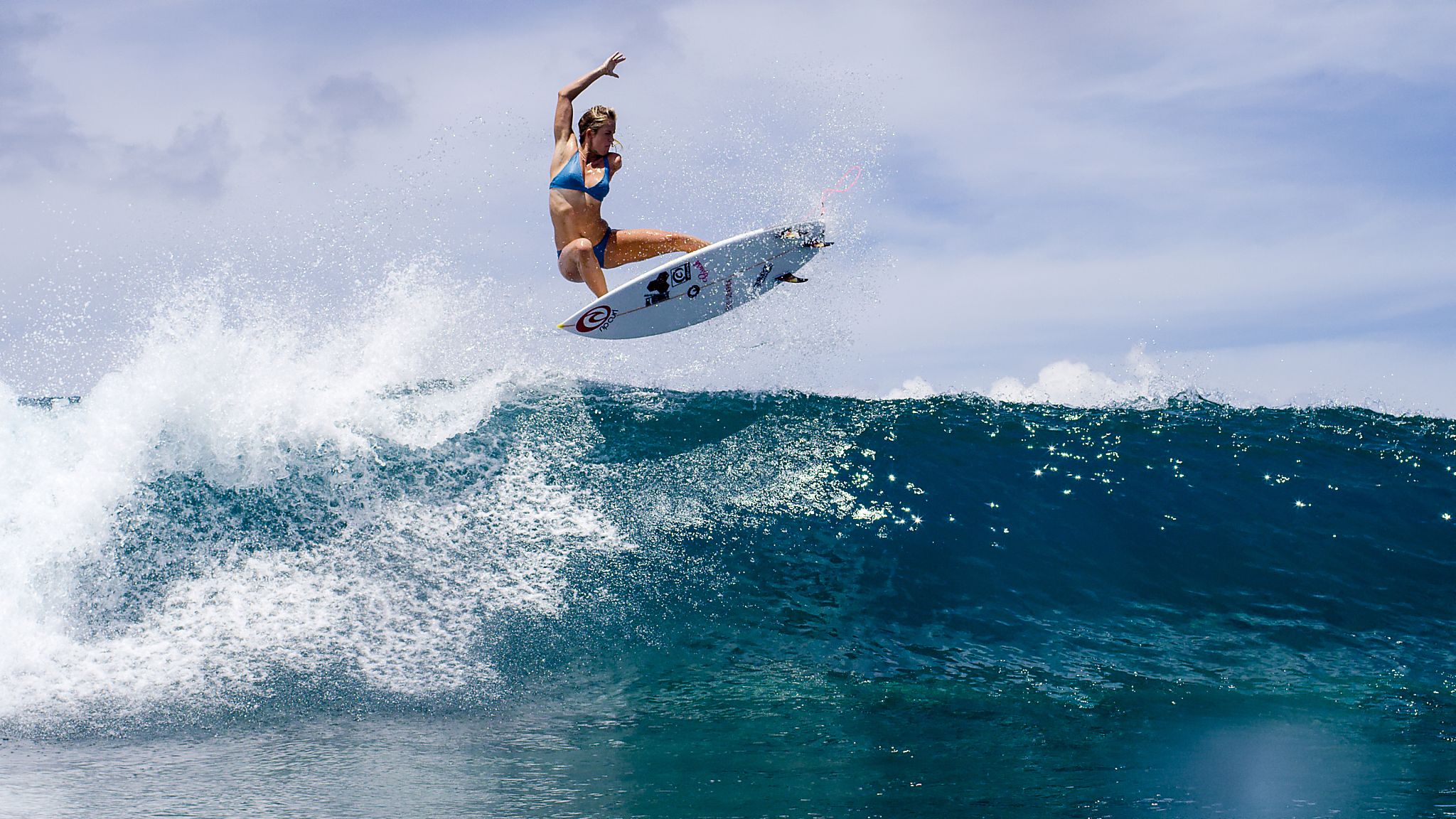Director-Cinematographer Aaron Lieber Captured the Surfer Ripping the World’s Most Dangerous Waves
Since first making headlines in 2003 for surviving a shark attack when she was 13 years old, Bethany Hamilton has become one of the most recognizable surfers in the world. In 2011, she was the subject of the movie Soul Surfer, a dramatized account based on her autobiography.
Now, feature documentary Bethany Hamilton: Unstoppable highlights her ambition to compete at the highest level of the sport, riding some of the most dangerous waves in the world. Filming those mammoth waves is also no easy feat — but director-cinematographer Aaron Lieber made it look easy.
Lieber, who previously made a documentary about female surfer star Lakey Peterson, began shooting footage of Hamilton in 2014 and crowdfunded the initial short film into a 90-minute feature destined for theatrical release.
“I was on the road a lot of the time following Bethany, but I didn’t have the luxury of a big team, so I had to select a camera package that was lightweight and yet lent a cinematic film quality,” Lieber explains.
“I chose Red Epic Dragon for those reasons and, as importantly, because it enables me to do so much in post. Recording at 6K means I can shoot a bit wider than I normally would, then keyframe later.”
Lieber paired the Epic with Canon EF glass, housed in lightweight carbon fiber for filming in water, with interviews shot using Zeiss lenses.

Bethany Hamilton
Aaron Lieber/Lieber Films
For Unstoppable, Lieber shot 49 interviews, conducting them himself while running audio and pulling focus. “I tended to pull a little further back, knowing I can reframe or adjust in post to spice it up. I didn’t have the budget for a big lighting package either, so the dynamic range of the Epic also gave me more options in post to pull color and make the shot come to life.”
The ability to capture an action sport at variable frame rates was also vital. Lieber recorded sequences at 6K 72fps, 4K 120fps and even 2K 240fps. He also used a Panasonic GH4 and GoPro for run-and-gun shots and more intimate moments when a larger camera might have detracted from the moment.
“For me, Red is the backbone for cinematic presentation and to make the film feel big enough for that theatrical experience,” Lieber adds. “The quality of the footage is so high it carries other cameras that aren’t at that same level.”

Bethany Hamilton
Aaron Lieber/Lieber Films
One sweeping land-to-sea aerial shot captures the scale and skill of Hamilton’s achievement. It shows her ripping it to the end at Pe’ahi, also known as Jaws, on the island of Maui, where waves can reach upwards of 80 feet. “It’s one of the pinnacles of world surfing,” says Lieber.
The 90-second single shot begins far above in the clouds and drops down until it hits the surf below, all the while picking up Hamilton as a small point of focus and gliding down until she kicks into the huge wave.
“This was a critical moment in Bethany’s surfing comeback,” he explains. “Jaws has been filmed many times, so I wanted to capture the scale of the challenge in a way that had never been done before. I came up with the idea of using a helicopter. So, we hired a great heli pilot, Don Shear, and camera-operator Mike Prickett and put the Red on a Shotover gimbal.
“The night before we all had a meeting to talk about safety and the execution I had in mind. The idea was to start by hovering over the land and then, as Bethany begins her ride, to have the heli move from the cliffs over the water and track down to meet her on the wave then, as she kicks out, to finish above her.
“They confidently said yes — even though no one has ever done it!”
On the day, Hamilton had already surfed and was resting but decided to try for one last catch. Pilot Shear had made one pass overhead to get his line of approach just right.
Lieber himself was in the water shooting with a Red and had arranged additional angles from Red operators on a jet ski, as well as another one on the beach.
“With action sports, once things get going, there are no chances for any do-overs,” Lieber says.
When Hamilton went for it there was no time for communication between the helicopter and ground crew.
“It all came together in this perfect shot (in 5K 60fps). It was all done on instinct and skill.”
Bethany Hamilton: Unstoppable is currently in theaters.

Brittany Hamilton
Aaron Lieber/Lieber Films
Crafts: Shooting
Sections: Creativity
Topics: aaron lieber bethany hamilton gh4 gopro Red red dragon red epic shotover
Did you enjoy this article? Sign up to receive the StudioDaily Fix eletter containing the latest stories, including news, videos, interviews, reviews and more.









